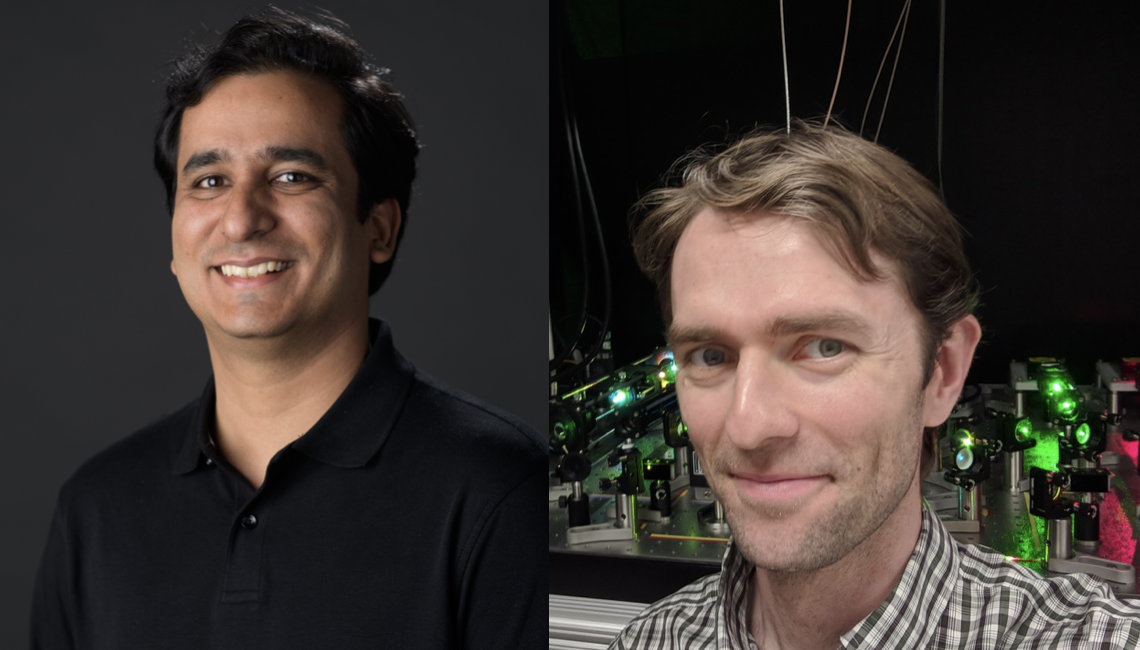On Oct. 2, developmental biology assistant professor Alistair Boettiger and psychiatry and behavioral sciences assistant professor Manish Saggar received the National Institute of Health (NIH)’s New Innovator Award to fund their respective research projects on genome folding and the computational methods for understanding the human brain.
The NIH’s New Innovator Award was established in 2007 to support “out-of-the-box” scientists in their biomedical research pursuits. The grant hopes to expedite the pace of new discoveries by funding $1.5 million each to projects that are normally considered “too risky” in the traditional scientific peer review process, according to the NIH website. Boettiger and Saggar are among eight School of Medicine researchers who received a grant from the NIH this year.
Boettiger explores genome folding and gene expression
Boettiger’s research focuses on how the folding of genomes and communication within a cell’s nucleus affect gene expression.
“Only about 2 percent of your DNA sequence — the coding sequences — makes the real building blocks of life [proteins], and the rest of that sequence tells the genome which of those genes to use and in what combinations,” Boettiger said, explaining the concept of gene expression. “Our lab focuses on how to turn these genes on and off, primarily in the context of development.”
Currently, Boettiger’s lab uses the fruit fly as a model system for exploring the general mechanisms behind the long-range communication of DNA sequences involved in gene expression. The lab also studies the sequences’ integration into the overall genome, as well as the impact of cell-type specific DNA folding on gene expression.
“Understanding the link between these aspects is important because it is what makes us humans compared to chimpanzees, and what makes some individuals susceptible to diseases like cancer,” said Leslie Mateo, a third-year developmental biology Ph.D student in the Boettiger lab.
Using funding from the New Innovator Award, Boettiger said he hopes to expand more of his work to examine vertebrate tissues and other vertebrate-cultured models. He also aims to further develop nano-imaging microscopy approaches to examine these systems on a scale that can be seen by the human eye.
“The emerging picture from genetics is that part of cell differentiation involves the refolding of our ‘book’—our genetic code—in different ways,” Boettiger said. “The visualization of this [using microscopy] has something special to add to our understanding. I really like how the different methodologies complement each other.”
Saggar on computational methods for understanding the brain
Saggar, director of the Brain Dynamics Lab at Stanford, focuses his research on developing computational methods to assess mental disorders and how the human brain adapts to different scenarios. He established his Brain Dynamics Lab in March 2017 and explored how to best capture neuronal dynamics using fMRI data.
“There is a huge need for anchoring diagnosis into biological features so that precise diagnosis, proper management of the disorder and efficient treatments can be developed,” he said.
Saggar and his lab work to create tools to better represent brain dynamics, or the diverse activity of millions of interconnected neurons within the brain, both while the brain is at rest and while it performs tasks. The goal is to eventually understand the overall landscape of the brain, which could yield insight into a single patient’s mental well-being. The lab also works to investigate the mechanisms that drive mental disorders and find potential biomarkers for them.
“We’re simulating whole brain network models that are specific to an individual patient so we can optimize therapies on an individual level,” said second-year bioengineering Ph.D. student and Saggar lab member Rafi Ayub. “I think we can make a lot of impact in personalized medicine for psychiatric illness and better [understand] mental disorders.”
With the funding from the NIH, Saggar hopes to develop novel computational approaches to further model how an individual’s brain-states change over time, by taking already-collected neuroimaging data from individuals who are diagnosed with either major depression or ADHD.
“[We can] use these new modeling techniques to capture clinically meaningful insights about changes in the brain’s intrinsic activity without averaging data across space, time, or individuals,” Saggar said.
Using the NIH New Innovator Award as a platform to fund their future research endeavors, both Boettiger and Saggar hope to forge ahead in their respective fields.
“I’ve always enjoyed hypothesis testing, and the constant puzzle-solving from day-to-day,” Boettiger said. “Little puzzles fit into grander puzzles, and there’s always some new discovery that’s super exciting.”
Contact Tejas Athni at tathni ‘at’ stanford.edu.
